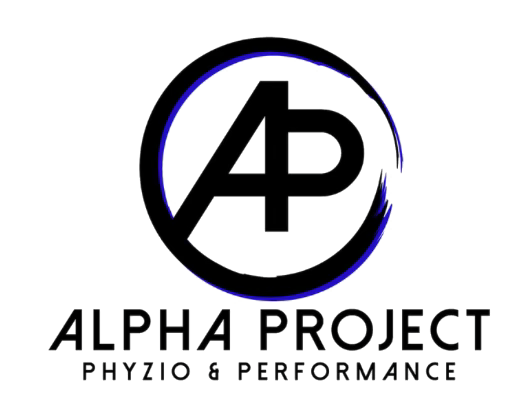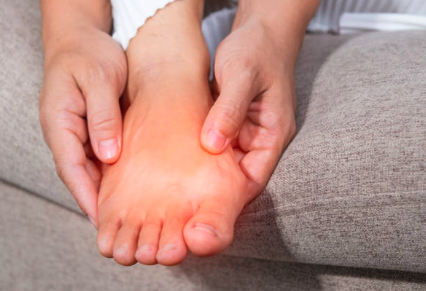How to Treat Bunions Without Surgery: The One Exercise You Need to Know.
Dealing with bunions is no fun. The pain and discomfort that comes with bunions can affect your daily life, including walking, running, jumping – and even standing.
If you’re developing bunions, you may be looking into non-surgical ways to correct the issue. But, can bunions actually be treated without surgery? The answer is, typically, yes, there are ways to relieve the pain from a bunion without the need for surgery.
In this article, you’ll learn an easy effective exercise to treat bunion pain at home!
First, What is a Bunion?
A bunion is a callus that forms on the side of the joint on your big toe.
Many people think bunions are what can cause the big toe to angle out and point towards the other 4 toes. However, that angulation of the big toe is actually from the twisting and bending of the first metatarsal.
Here’s an image to get the point across:
The twisting of the first metatarsal is called hallux valgus and is the true cause of a bunion.
Over time, the condition may become painful as extra bone grows where the base of the big toe meets the foot. The pain and discomfort of bunions can range in severity, and you may also experience swelling, numbness or even a burning sensation.
Bunions and Foot Stability
Having a stable foot is a healthy foot. One foot condition has been shown to always have an unstable foot is Hallux Valgus, which commonly has a bunion associated with it!
Hallux Valgus is when the first metatarsal, the long bone right before your big toe joint, is angled out AND twisted out. The bunion is only a secondary effect from the first metatarsal collapsing and twisting out! The bunion is a build up of bony material typically from the inside of your foot rubbing against narrow shoes.
Knowing this, is there anything you can do to help you bunion? Wear less restrictive shoes? Sure. Use toe spacers? Absolutely.
How To Treat a Bunion Without Surgery
A bunion is actually caused from instability of the first metatarsal. In order to help correct the bunion and stabilize the foot, you need to activate your intrinsic foot muscles and strengthen your foot/ankle!
There’s no guarantee or promise that foot strengthening will solve the issue completely, however, the intrinsic and extrinsic foot muscles will help increase stability around the first metatarsal and stabilize it.
There is more research coming out that is exploring conservative treatments for bunions and hallux valgus deformities that explore the effectiveness of stabilizing the first metatarsal through foot strengthening.
The old school method of treating this is through orthotics, taping, and surgery….. all of which are a temporary solution or invasive.
Exercises for Healthy Feet
Below is a video going over one of the most important exercises you can do to have a healthy foot and start to create stability for your foot. The great thing is, if you are a runner you should be doing these anyways, even if you don’t have a bunion!
How The Short Foot Exercise Helps Treat Bunions
The short foot exercise is how you can start to train your arches to get more arch activation and strengthen your foot.
First thing to do is to bring your big toe up, and press it straight down into the ground. You hopefully should start to see and feel some arch activation and arch rising here.
Once you master the big toe press down, we can focus on the short foot exercise.
To do this, again press the big toe down, and then raise the arch of your foot up. Realy press down hard on the big toe and think of doming the foot. Hopefully you see the arch rise and see the muscles contract. Take a break for a few seconds and try it again.
Notes:
You don’t want to see the tendon on the top of your pop out! The arch rising should really come from the big toe press down. Not the shin muscles helping.
The ankle should be nice and relaxed.
You shouldn't feel the calf at all, only the arch and pressure of the big toe pressing down.
You can then progress to a standing version of this. Here is an example of me performing the short foot exercise!
Other Methods for Treating Bunions
Your choice of footwear matters! Finding a comfortable shoe will help Consider opting for shoes with a low heel drop, and wide toe box to help your toes splay. Barefoot shoes are a good option.
Doing foot stretches on your own can help with flexibility.
Physical therapy can help improve your foot strength.
Foot releases using a lacrosse ball on the bottom of the foot will also help break down any adhesions and help turn on your arch muscles.
Closing Out: Treating Bunions
Give these a shot on your own. Seriously! The last thing you’d want to do is have the answers to solve your problem and then never implement an answer! Try these exercises, like the short foot, on your own. Feel free to reach out with any questions by reaching out below or email me at Matt@alphaprojectphyzio.com



